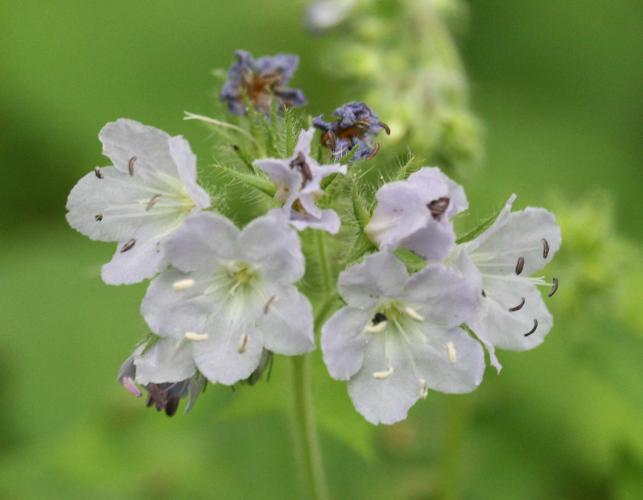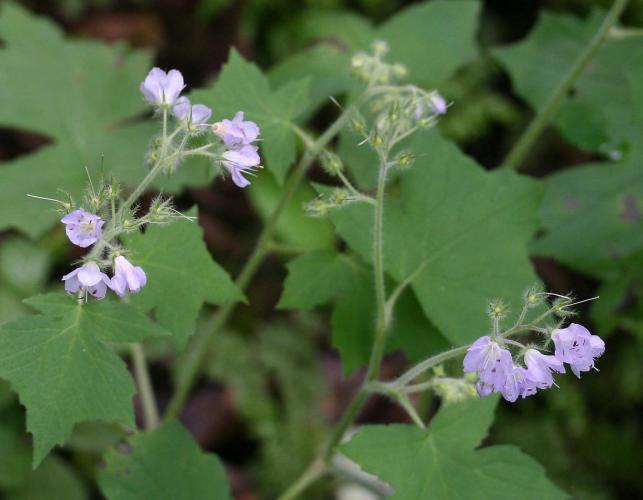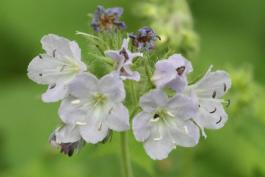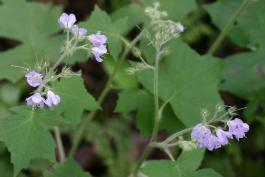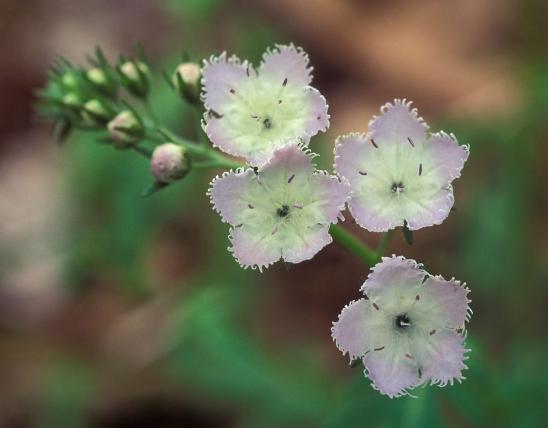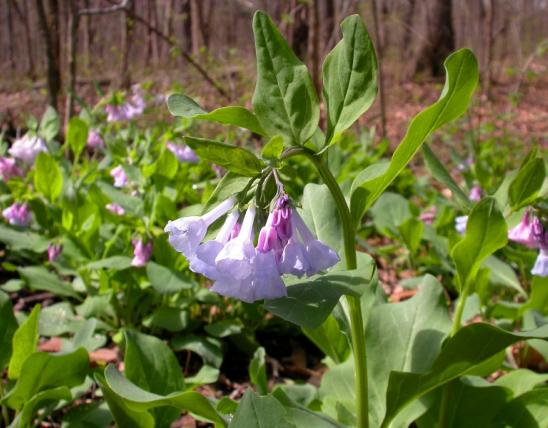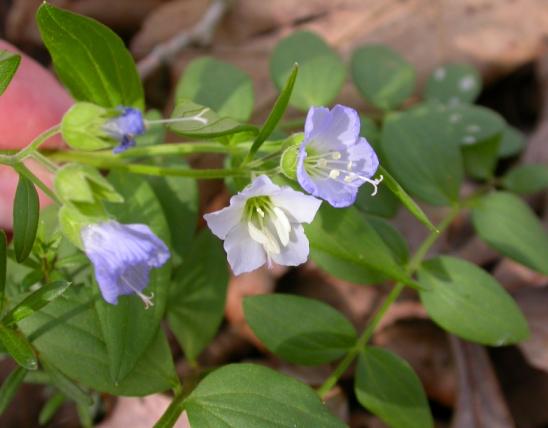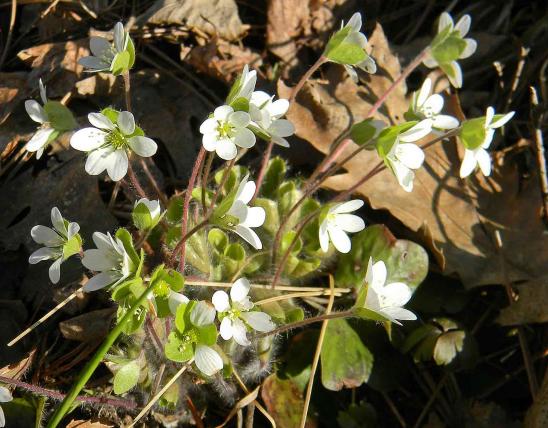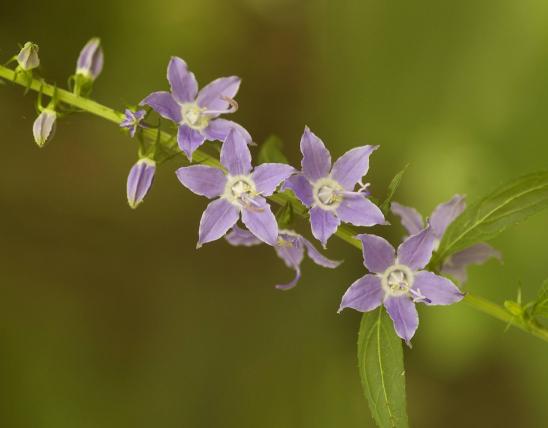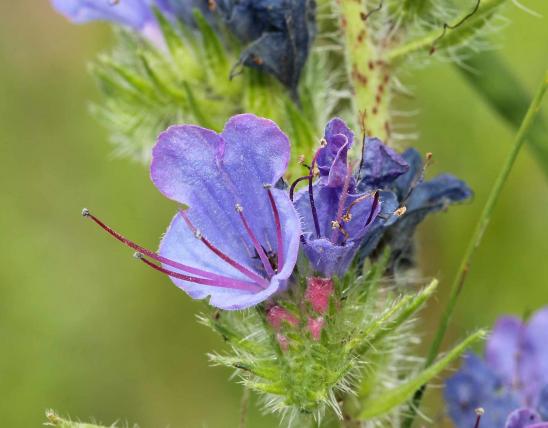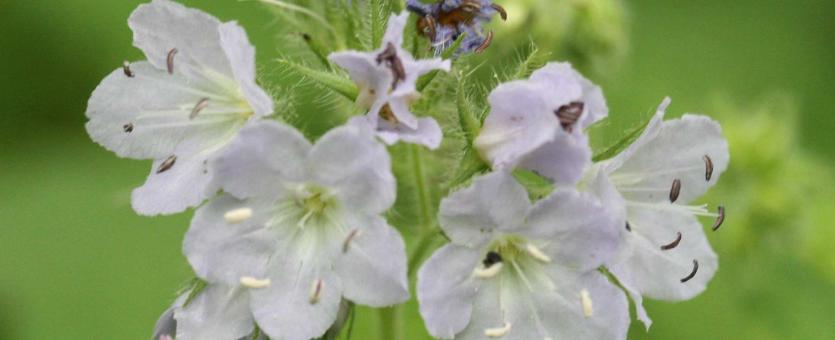
A hairy, branching biennial growing to 2 feet tall, woollen breeches bears loose clusters of light blue, bell-shaped flowers. The lower leaves are shaped something like maple leaves and often have grayish or light green marks that look like water stains.
Flowers in loose groups (cymes), usually borne above the leaves; corolla with 5 shallow lobes, light blue; stamens purple-tipped, protruding slightly. Calyx with 5 sharp-pointed lobes; between each is a small, backward-curved appendage. Blooms April–July. Leaves alternate, thin, soft-hairy, palmately 5-lobed (like a maple’s), irregularly coarse-toothed, on long petioles. Lower leaves often with grayish or light green patches on upper surface, appearing water stained.
Similar species: Our other waterleafs lack the recurved appendages between the sepal lobes. Broadleaf waterleaf (H. canadense) grows only in east and east-central Missouri, is not hairy, and usually has leaves above the flower clusters. Virginia waterleaf (H. virginianum) is smooth, with pinnately lobed leaves (like a feather) with the pairs of lobes divided by a section of the midvein. Phacelias, such as Miami mist, have flowers in coiled cymes instead of branching or headlike cymes.
Height: to 2 feet.
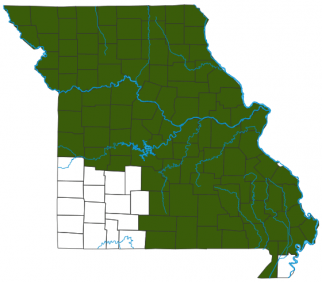
Statewide except in southwest counties.
Habitat and Conservation
Occurs in rich woods on slopes or in valleys.
Status
The name “waterleaf” is a translation of the genus name, Hydrophyllum, and both refer to the grayish or light “water-stained” look of the leaves, characteristic of many members of the genus. The species name, appendiculatum, refers to the odd little backward-curving appendages between the sepal lobes, which separates this species from its close relatives. “Woollen” clearly refers to the hairiness, but you must use your imagination to figure out the “breeches” part of the name!
Human Connections
This plant can be used as a woodland flower in native wildflower gardening, as it reseeds readily. In the wild, it delights hikers with its cool blue blossoms on warm days in early summer.
Ecosystem Connections
Several kinds of bees, flies, butterflies, and other insects visit the flowers for pollen and nectar. It is likely that herbivorous mammals, such as deer and rabbits, eat the foliage. It takes more than trees to make a forest; woodland wildflowers are an important part of forest ecosystems.
